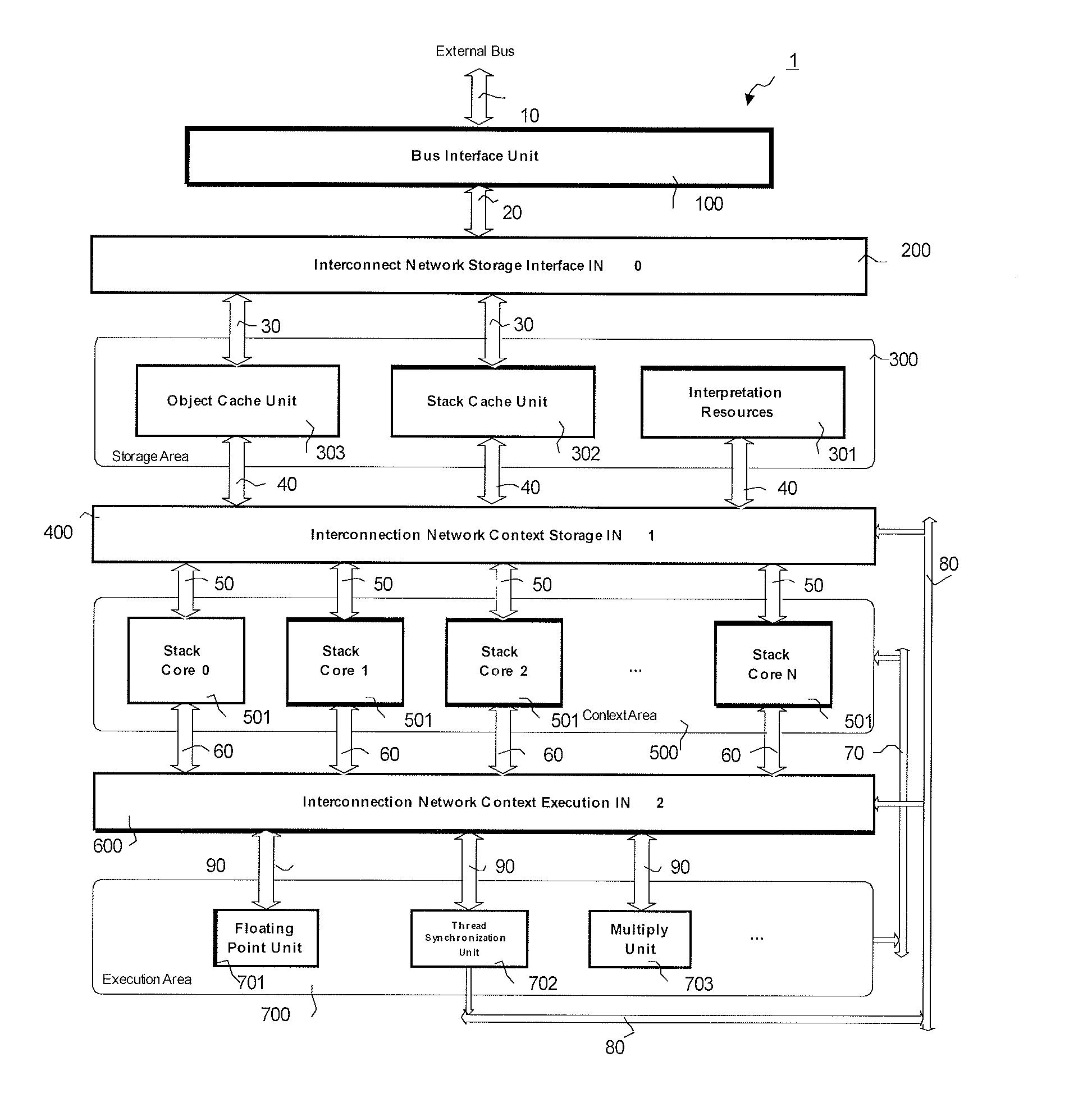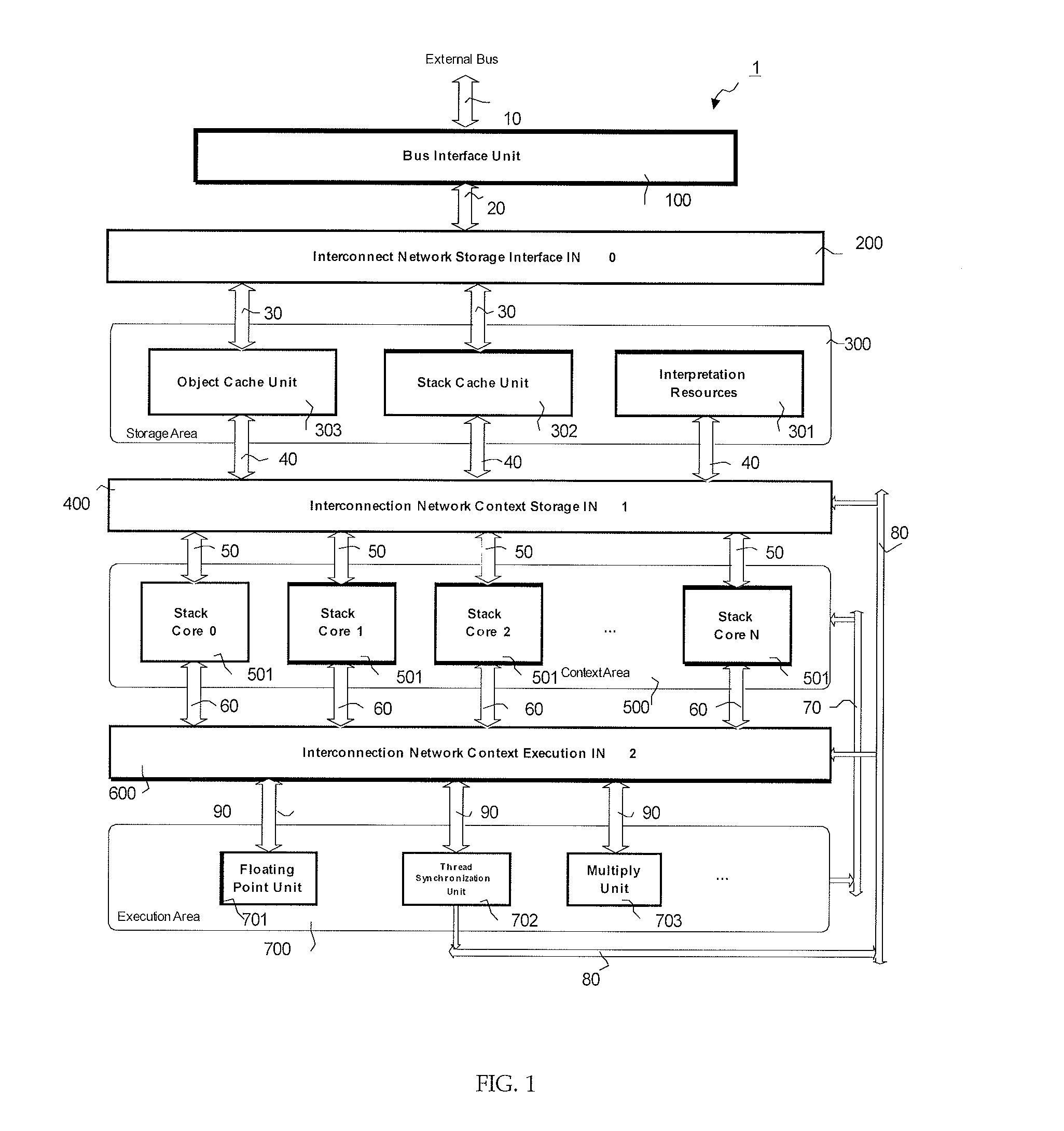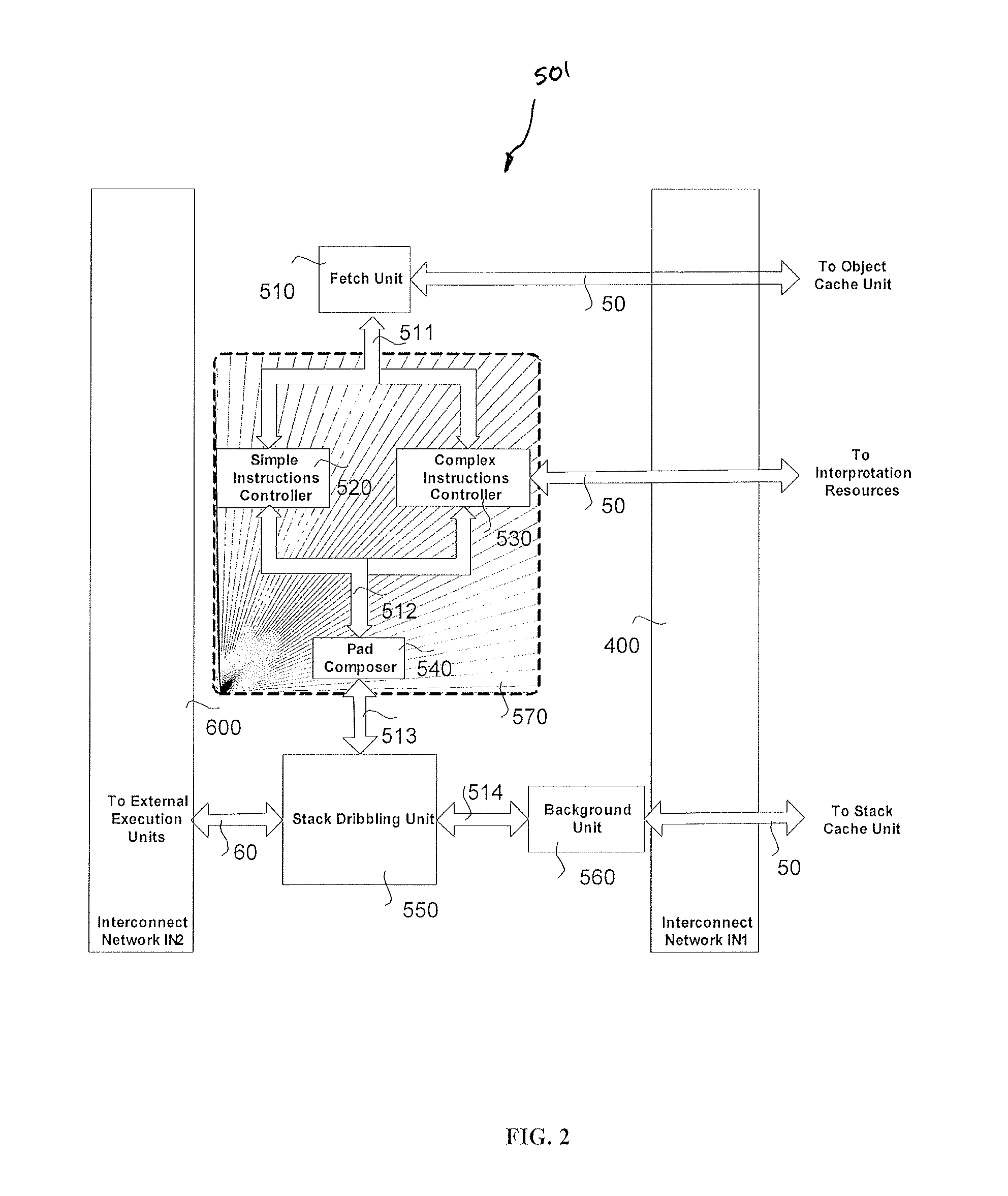Hardware multi-core processor optimized for object oriented computing
a multi-core processor and object-oriented technology, applied in the field of computer microprocessor architecture, can solve problems such as inefficiency for the entire processor
- Summary
- Abstract
- Description
- Claims
- Application Information
AI Technical Summary
Benefits of technology
Problems solved by technology
Method used
Image
Examples
Embodiment Construction
[0027]FIG. 1 shows a computing system 1 that includes multiple stack cores 501 (e.g., stack core 0 to stack core “N”) and multiple shared resources, according to an embodiment of the present invention. Each stack core 501 contains hardware resources for fetch, decode, context storage, an internal execution unit for integer operations (except multiply and divide), and a branch unit. Each stack core 501 is used to process a single instruction stream. In the following description, “instruction stream” refers to a software thread.
[0028]The computing system shown in FIG. 1 may appear geometrically similar to the thread slot and register set architecture shown in FIG. 2(a) in U.S. Pat. No. 5,430,851 to Hirata et al. (hereinafter, “Hirata”). However, the stack cores 501 are fundamentally different, in that: (i) the control structure and local data store are merged in the stack core 501; (ii) the internal functionality of the stack core is strongly language (e.g., Java™ / .Net™) oriented; and...
PUM
 Login to View More
Login to View More Abstract
Description
Claims
Application Information
 Login to View More
Login to View More - R&D
- Intellectual Property
- Life Sciences
- Materials
- Tech Scout
- Unparalleled Data Quality
- Higher Quality Content
- 60% Fewer Hallucinations
Browse by: Latest US Patents, China's latest patents, Technical Efficacy Thesaurus, Application Domain, Technology Topic, Popular Technical Reports.
© 2025 PatSnap. All rights reserved.Legal|Privacy policy|Modern Slavery Act Transparency Statement|Sitemap|About US| Contact US: help@patsnap.com



